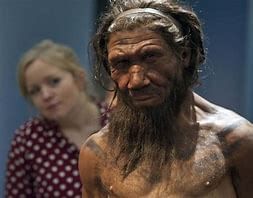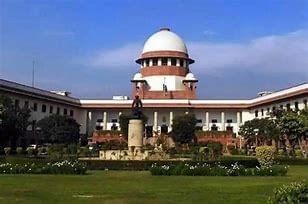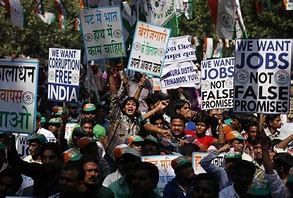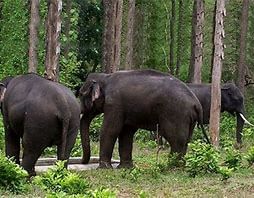UPSC Daily Current Affairs- 26th May 2024 | Current Affairs & Hindu Analysis: Daily, Weekly & Monthly PDF Download
GS-I/History and Culture
Oldest Known Human Viruses Discovered In 50,000-Year-Old Neanderthal Bones
Source: Economic Times

Why in News?
Researchers found traces of many present-day viruses in the bones of two Neanderthals who lived 50,000 years ago, providing a new perspective on their extinction.
Breakthrough Study on Neanderthals
- Ancient viruses in Neanderthal DNA samples from skeletons found in Russia's Chagyrskaya cave.
- The study detected fragments resembling three modern viruses: adenovirus (common colds), herpesvirus (cold sores), and papillomavirus (genital warts).
Health Impacts Inherited in Modern Human Beings:
- Modern humans inherit various health impacts from Neanderthals, including:
- Skin conditions
- Allergies
- Metabolism
- Nicotine addiction
- Mood disorders
- Sleep patterns
- Blood clotting
- Sense of smell
- UV radiation response
Who were the Neanderthals?
- Neanderthals were a distinct species of hominins that lived in Europe and parts of Asia around 400,000 to 40,000 years ago during the Middle to Late Pleistocene Epochs.
- Their evidence was first found in 1856 in the Neander Valley in present-day Germany.
Physical Features:
- Neanderthals were robustly built, with a stocky and muscular frame adapted to cold climates.
- They had large brains, comparable in size to modern humans, indicating advanced cognitive abilities.
- Distinctive features included a prominent brow ridge, large nose, and a receding chin.
Social Life:
- Neanderthals were skilled hunters and gatherers, using tools such as stone flakes, scrapers, and spears for hunting and butchering animals.
- They utilized fire for cooking, warmth, and protection, as evidenced by the presence of hearths in their archaeological sites.
- Evidence suggests they had complex social structures and engaged in rituals and symbolic behaviours, including burying their dead with grave goods.
Habitat and Distribution:
- Neanderthals inhabited a wide range of environments, including open grasslands, forests, and even cold tundra regions.
- Their range extended from Western Europe to Central Asia, with evidence of populations in regions such as Spain, France, Germany, Croatia, and the Middle East.
Interactions with Modern Humans:
- Neanderthals coexisted with early modern humans (Homo sapiens) for thousands of years in Europe and Asia.
- There is evidence of interbreeding between Neanderthals and modern humans, with genetic studies indicating that non-African humans carry about 1-2% Neanderthal DNA.
GS-II/Polity and Governance
SC refuses to issue Interim order on Voter data
Source: The Hindu

Why in News?
The Supreme Court declined to grant an interim order regarding the release of voter data by the Election Commission of India.
- On May 24, the Supreme Court dismissed a plea from the Association for Democratic Reforms (ADR) requesting authenticated, scanned, and legible copies of Form 17C.
ADR's Request:
- ADR asked the Election Commission to upload Form 17C, detailing votes cast in each booth after every Lok Sabha election phase.
- ADR raised concerns about delays in publishing final voter turnout data and notable revisions in turnout percentages.
Reasons for Court's Decision:
- The court refused the plea due to the timing of the general elections and the extensive resources required.
- Granting interim relief would essentially provide final relief, already part of a pending petition since 2019.
- Senior advocate Maninder Singh argued that ADR's application was baseless and aimed to discredit the Election Commission.
Judiciary's Role in Elections:
- The Supreme Court stressed non-interference in election processes managed by the Election Commission.
- It aims to enhance election conduct without obstructing ongoing processes, considering the complexities involved.
Conclusion:
- The Supreme Court's decision reflects a cautious approach to intervening in electoral processes, prioritizing transparency and fairness while acknowledging operational challenges faced by the Election Commission.
GS-II/Polity and Governance
Reading the Lower Voter Turnout Scenario
Source: The Hindu
Why in News?
Understanding the significance of low voter turnout in the initial phases of the 2024 general elections in India, reflecting changing dynamics in democratic politics.
American Scenario during Past Elections
- Traditionally, increased voter turnout in the U.S. was believed to benefit Democrats, but recent research challenges this notion.
- Studies indicate that the advantage Democrats once gained from higher turnout has diminished due to evolving voting patterns.
- Simulation studies have shown varying impacts of increased turnout on election outcomes over time.
Perception About the Party's Prospects
- High confidence in a party's victory may lead to voter apathy and lower turnout.
- Historical examples, such as Bill Clinton's expected victory in the 1996 US Elections, have influenced voter participation.
Indian Scenario
- Significant shifts in voting patterns among different social groups in the 2019 Indian election, including Scheduled Castes, Upper Caste Poor, Poor OBCs, Poor STs, and Poor Muslims.
- Factors like class, caste, religion, language, region, and personality play crucial roles in influencing voter decisions in India.
- Voter turnout trends in India have been inconsistent in relation to incumbent advantage or disadvantage.
- The impact of habitual versus non-habitual voters on elections is notable, influenced by the diverse nature of Indian politics.
- Various factors such as weather, COVID-19, economic issues, and voter apathy can affect voter turnout in the 2024 general elections, potentially impacting different parties differently.
Conclusion
The presence of non-habitual voters in Indian elections introduces an element of unpredictability, making it challenging to draw definitive conclusions until election results are finalized.
GS-II/International Relations
Arab League demands UN Peacekeepers in Palestine
Source: The Hindu

Why in News?
The Arab League has urged the deployment of UN peacekeeping forces in the Palestinian territories during a summit in Manama, Bahrain.
- The "Manama Declaration" issued by the league calls for the presence of UNPKF in the occupied Palestinian territories until a two-state solution is established.
Back2Basics: United Nations Peacekeeping
- UN Peacekeeping involves a collaborative effort by the international community, under the leadership of the United Nations, to uphold peace and security in conflict-affected regions.
- UN peacekeepers, often known as Blue Berets or Blue Helmets due to their distinctive headgear, can comprise of soldiers, police officers, and civilian personnel.
History
- The concept of UN peacekeeping emerged post-World War II with the formation of the United Nations in 1945.
- The first UN peacekeeping mission was established in 1948 after the Arab-Israeli War to supervise the ceasefire between Israel and its Arab neighbors.
- This initial mission, named the United Nations Truce Supervision Organization (UNTSO), set the foundation for future peacekeeping endeavors.
- Over time, UN peacekeeping has expanded in scope and complexity, conducting operations worldwide in regions afflicted by conflict, civil unrest, and humanitarian emergencies.
Operations
- UN Peacekeeping operates based on three core principles: consent of the involved parties, impartiality, and the limited use of force except in self-defense and mandate protection.
- These operations are initiated with the consent of the primary conflict parties, either at their request or with UN Security Council authorization.
- The objectives of UN peacekeeping missions vary but commonly involve activities like ceasefire monitoring, disarmament, aid delivery facilitation, human rights promotion, and support for democratic governance structures.
- UN peacekeeping missions adhere to principles of impartiality, party consent, and restricted force application except for self-defense and mandate protection.
India's Role
- India has been a significant contributor to UN peacekeeping operations from their inception.
- India has provided nearly 195,000 troops, the highest from any country, and engaged in over 49 missions with 168 supreme sacrifices made while serving in UN missions.
GS-III/Economy
Joblessness in India
Source: Indian Express

Why in news?
Recently, a pre-poll survey by CSDS-Lokniti highlighted that unemployment is the most significant concern for Indian voters in 2024, with 29% emphasizing its importance.
- Following closely, 23% of respondents identified price rise as their key concern, making these two issues the top priorities for 52% of those surveyed.
What is Unemployment & LFPR?
- The Centre for Monitoring Indian Economy (CMIE) defines the labor force as individuals aged 15 years or older, comprising the employed and those actively seeking work but unable to find it.
- Labor Force Participation Rate (LFPR) signifies the proportion of individuals demanding jobs within the workforce, encompassing both the employed and job seekers.
- LFPR calculates the engagement level of individuals aged 15 and above in employment or job hunting against the total non-institutionalized, civilian working-age populace.
- In contrast, Unemployment Rate (UER) gauges the percentage of those unemployed (category 2) in relation to the labor force, serving as a vital metric globally to evaluate labor market health.
- Employment Rate (ER) represents the ratio of employed individuals to the overall working-age population, indicating the employment status within the economy.
Religion-wise Data From the Survey
- Religion-wise Working-Age Population: India's working-age population has grown from 96.45 crore in 2016-17 to 113.86 crore in 2023-24, with Hindus constituting 86% and Muslims 9.54%.
- Religion-wise LFPR: India's LFPR declined by 5.8% over eight years, with the percentage of job-seeking Hindus dropping from 46.6% in 2016-17 to 40.53% by March 2024.
- Religion-wise UER: The UER among Hindus, comprising 86% of the working-age populace, peaked at 8.73% in 2020-21, decreasing to 7.59% by 2022-23 and rising to 8.07% in 2023-24.
- Religion-wise ER: India's ER decreased by 5.6 percentage points over eight years, with Hindus experiencing a significant decline to 37.26% in 2023-24.
Caste-Wise Data From the Survey
- Caste-wise Working-Age Population: Approximately 60% of the working-age demographic comprises Other Backward Classes (OBCs) and 23% Scheduled Castes (SCs).
- Caste-wise LFPR: LFPR has diminished for all castes, with upper-caste Hindus exhibiting the lowest LFPR.
- Caste-wise UER: The UER among upper castes escalated from 8.62% in 2016-17 to 9.83% in 2023-24, nearly reaching double digits.
- Caste-wise ER: OBCs and SCs witnessed a substantial decrease in ER by 6.36 percentage points each, with upper-caste Hindus maintaining the lowest employment rate throughout the period.
GS-III/Environment and Ecology
Mrugavani National Park
Source: The Hindu

Why in News?
The extent of Mrugavani National Park at Chilkur in Moinabad mandal has undergone significant revision on paper, resulting in a reduction of 80 hectares.
About Mrugavani National Park:
- Location: It is situated in Hyderabad, Telangana.
- Topography: The park's topography supports woodlands, grasslands, and rocky areas.
- Vegetation: Most of the vegetation can be categorized as southern tropical dry deciduous forests.
- Flora: The flora includes Teak, Bamboo, Sandal, Picus, Palas, and Rela. The plant species comprise bryophytes, pteridophytes, herbs, shrubs, climbers, and trees. The vegetative cover presents a mosaic of woodland and grasslands.
- Fauna: The park is home to various species including the Indian hare, forest cat, civet, Indian rat snake, Russell's viper, and cheetal.
What are tropical dry deciduous forests?
Tropical dry deciduous forests are a type of terrestrial ecosystem found in regions with distinct wet and dry seasons, typically within tropical and subtropical regions. These forests are characterized by trees that shed their leaves during the dry season to conserve water, and they regrow their leaves when the wet season returns.
GS-III/Environment and Ecology
Proboscis monkey
Source: Mirror

Why in News?
When the team examined the bony nasal cavity inside the skulls of the primates, they found their large noses offer several "major benefits"- especially when it comes to attracting potential female partners. Living on the island of Borneo, proboscis monkeys have been branded one of the world's "ugliest" creatures due to their large and unusual looking noses.
About Proboscis monkey:
- It is a medium-sized arboreal primate found only in the rainforests of Borneo.
- Appearance: The male Proboscis Monkey is among the largest monkeys in Asia, characterized by a long, fleshy nose and a large, swollen stomach.
- Habitat: They inhabit coastal mangroves, peat swamps, and riverine forests, with a diet primarily consisting of leaves.
- Characteristics:
- They are proficient swimmers with webbed fingers and toes.
- They typically live in harem groups led by a single adult male, several adult females, and their offspring.
- Males usually form harems in their middle age.
- They are diurnal creatures, active during the day, and communicate through vocalizations like honks and roars in dense forest environments.
- Threats: Extensive deforestation for timber, settlements, and oil palm plantations has severely reduced their habitat.
- Conservation status:
- IUCN: Endangered
- CITES: Appendix I
GS-III/Science and Technology
Food Irradiation
Source: Indian Express

Why in News?
The Union government is planning to significantly scale up the irradiation of onions this financial year to increase the shelf life of its buffer stock.
About Food Irradiation:
- Food irradiation is a technology that enhances food safety and prolongs the shelf life of foods by reducing or eliminating microorganisms and insects.
- Sources used for irradiation include gamma rays, X-rays, and electron beams.
- Irradiation serves various purposes:
- Prevention of Foodborne Illness: It effectively eliminates organisms like Salmonella and E. coli, which are responsible for causing foodborne illnesses affecting millions of people annually.
- Preservation: It destroys germs that lead to spoilage and decomposition, thereby extending the shelf life of foods.
- Control of Insects: It eradicates insects in or on tropical fruits imported into the United States, reducing the need for other pest-control methods that may harm the fruit.
- Delay of Sprouting and Ripening: It inhibits sprouting in items like potatoes and delays the ripening of fruit to increase their longevity.
- Sterilization: Foods can be sterilized through irradiation, allowing them to be stored for extended periods without refrigeration. Sterilized foods are beneficial in hospitals for patients with compromised immune systems.
GS-III/Science and Technology
Thyroid
Source: Times of India

Why in News?
World Thyroid Day is observed annually on May 25th to raise awareness about the thyroid gland and the various conditions that affect it.
About Thyroid:
- The thyroid is a small, butterfly-shaped gland located at the base of the neck, just below the Adam's apple. It's a part of your endocrine system and controls many of your body's important functions by producing and releasing thyroid hormones, like thyroxine (T4) and triiodothyronine (T3).
- These hormones affect every cell in the body.
- They support the rate at which the body uses fats and carbohydrates.
- They help control body temperature.
- They have an effect on heart rate.
- They help control how much protein the body makes.
What is Thyroid Disease?
- It is a general term for a medical condition that keeps your thyroid from making the right amount of hormones.
- Thyroid disorders are very common and mainly occur in women, although anybody - men, teenagers, children, and babies, too, can be affected.
- The two main types of thyroid disease are:
- Hypothyroidism (underactive thyroid): Not enough thyroxine is produced for the body's needs. This is the most common thyroid disorder.
- Hyperthyroidism (overactive thyroid): Too much thyroxine is produced for the body's needs.
What causes a thyroid disorder?
- There are many causes of the different thyroid disorders.
- Most commonly, the cause is due to autoimmune thyroid disease. This is a process in which the body's immune system attacks the thyroid cells as though they were foreign cells.
- In response, the thyroid gland becomes underactive (hypothyroidism) or overactive (hyperthyroidism).
- The autoimmune form of hypothyroidism is called Hashimoto's thyroiditis. The autoimmune form of hyperthyroidism is called Graves' disease.
Symptoms:
- Hypothyroidism: tiredness, feeling cold, weight gain, poor concentration, and depression.
- Hyperthyroidism: weight loss, heat intolerance, anxiety, and sometimes sore and gritty eyes.
Treatment:
- Thyroid disorder and many of its symptoms can be treated. Most thyroid disorders are treated with daily medication.
|
53 videos|5389 docs|1140 tests
|
FAQs on UPSC Daily Current Affairs- 26th May 2024 - Current Affairs & Hindu Analysis: Daily, Weekly & Monthly
| 1. What are the oldest known human viruses discovered in 50,000-year-old Neanderthal bones? |  |
| 2. Why did the Supreme Court refuse to issue an interim order on voter data? |  |
| 3. What factors contribute to lower voter turnout scenarios? |  |
| 4. Why did the Arab League demand UN Peacekeepers in Palestine? |  |
| 5. What is the current status of joblessness in India? |  |





















